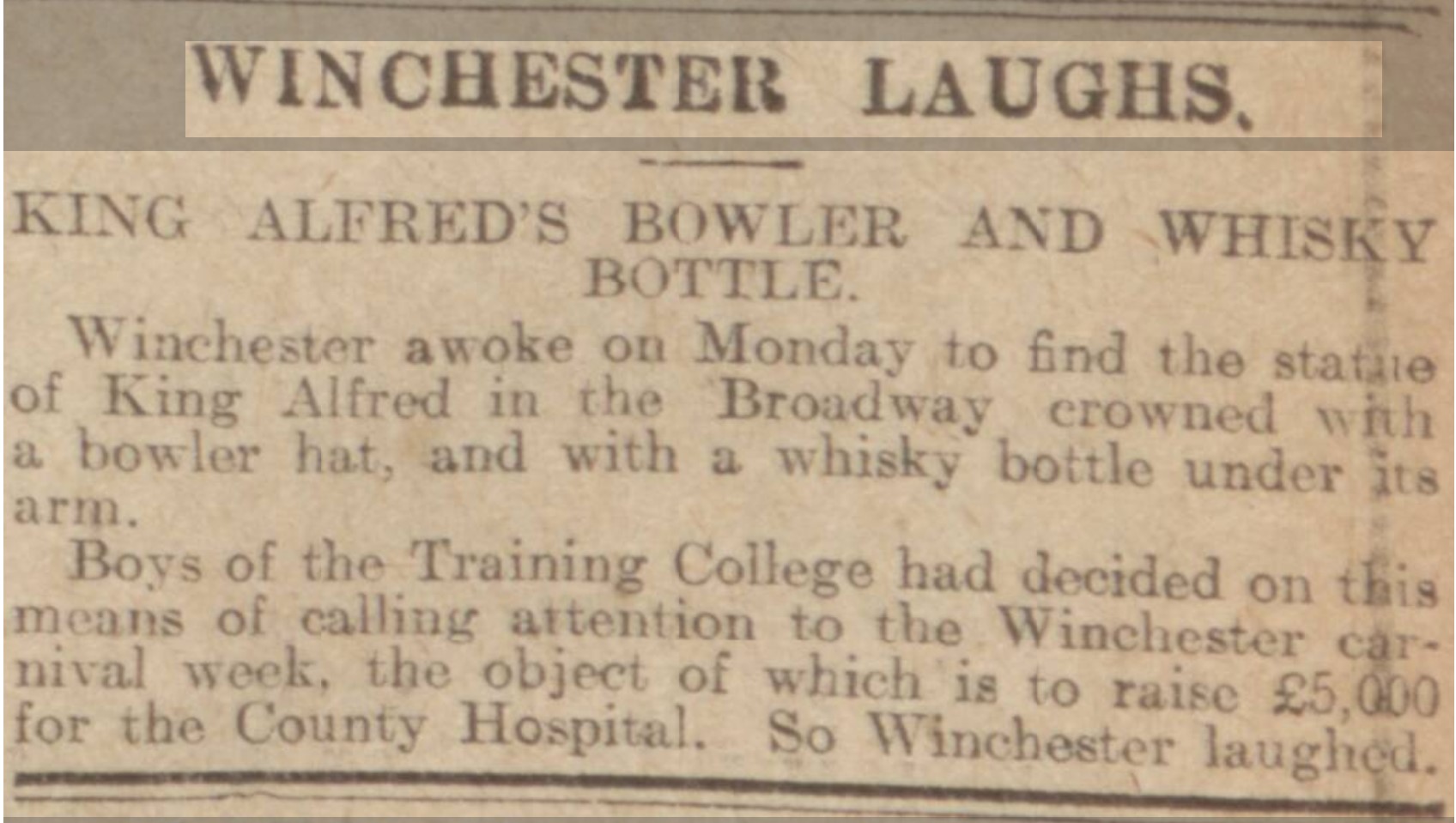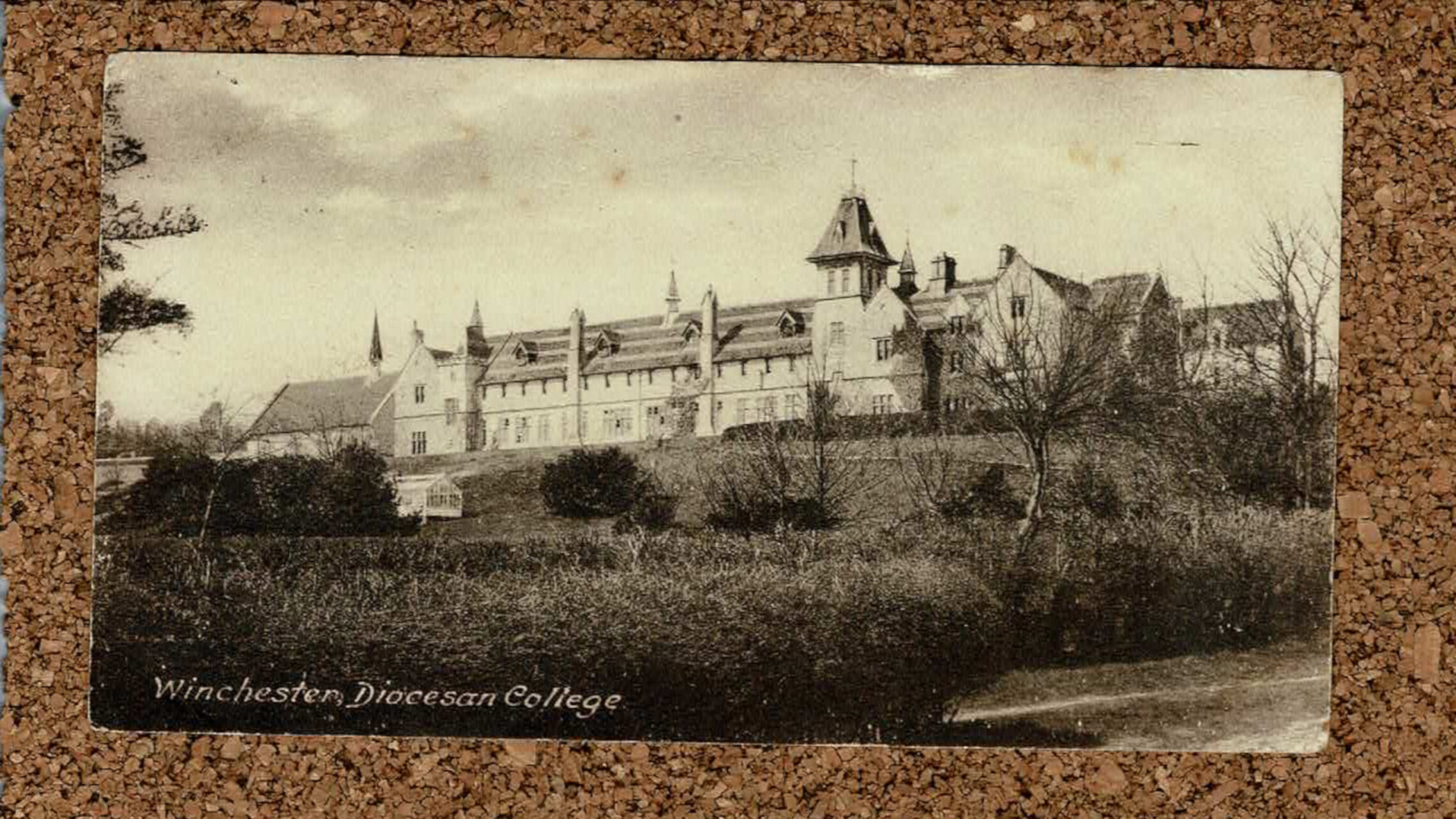Greetings from Winchester!
This week’s card, showing a frankly forbidding edifice, gives an opportunity to tell the tale of the University of Winchester.
Winchester is one of England’s oldest settlements, and in pre-Norman times a city of great importance, with a cathedral from the 660s, and a strong association with King Alfred, of which more later.
(One of the ways you can tell the age of a place is whether it has a name in Welsh, in addition to its English name. Croeso i Caerwynt is all I can say on that.)
Its university, on the other hand, is a much more modern foundation. The story starts in 1840, when Charles Sumner, Bishop of Winchester, established a Diocesan Training School in the city.
(Charles Sumner was brother to John Bird Sumner, Archbishop of Canterbury. Imagine getting to be a bishop and still not being the most ecclesiastical of your siblings.)
The training college was originally housed near the cathedral. In 1847 it moved to Wolvesey Palace, a less-favoured residence of the Bishops of Winchester, and was renamed Winchester Training College.
In 1862 the Training College moved again (necessitated by an outbreak of Cholera at Wolvesey Palace), this time to a purpose-built home, funded by subscriptions. The Diocesan Education Board also agreed that management of the college should be overseen by a committee elected by the subscribers, rather than directly by the diocese.
In 1928 the college was renamed King Alfred’s College. The long association of King Alfred with the city had rubbed off, clearly, on the college itself. Also present, as this clipping from the Western Gazette of 29 June 1928 shows, was the noble tradition of adorning statues:

King Alfred’s College continued to train teachers, and specifically to train men to be teachers. In 1960 women were admitted too.
In the 1970s there were moves to rationalise teacher training, and to protect its autonomy the College sought to offer a broader range of subjects. The College awarded degrees of the Council for National Academic Awards (CNAA), having moved away from a relationship with the University of Southampton. But on the demise of the CNAA in 1992, and with King Alfred’s College having expanded considerably its provision, Southampton became once more the validator for the college.
I guess the taste of relative autonomy under the CNAA had made this tutelage uncomfortable. Whatever the reasons, the College decided, when the government published criteria for university title, in 1995, to seek and gain these within ten years.
Taught Degree Awarding Powers were gained in 2003; University College title in 2004, and in 2005 the University of Winchester was created. On time. Possibly on budget too. Research Degree Awarding Powers in 2008 created the full set.
The university’s motto – Wisdom ond lar – is taken from King Alfred’s translation of Pope Gregory the Great’s Regula Pastoralis, and translated from the old English means Wisdom and Knowledge.
The card itself was sent to Master Arthur Fripp of Wimborne, Dorset, in 1922. It is possible that Arthur Fripp may have been a relative (perhaps uncle?) of Robert Fripp, founder of King Crimson.
Right place, right time, uncommon surname.













